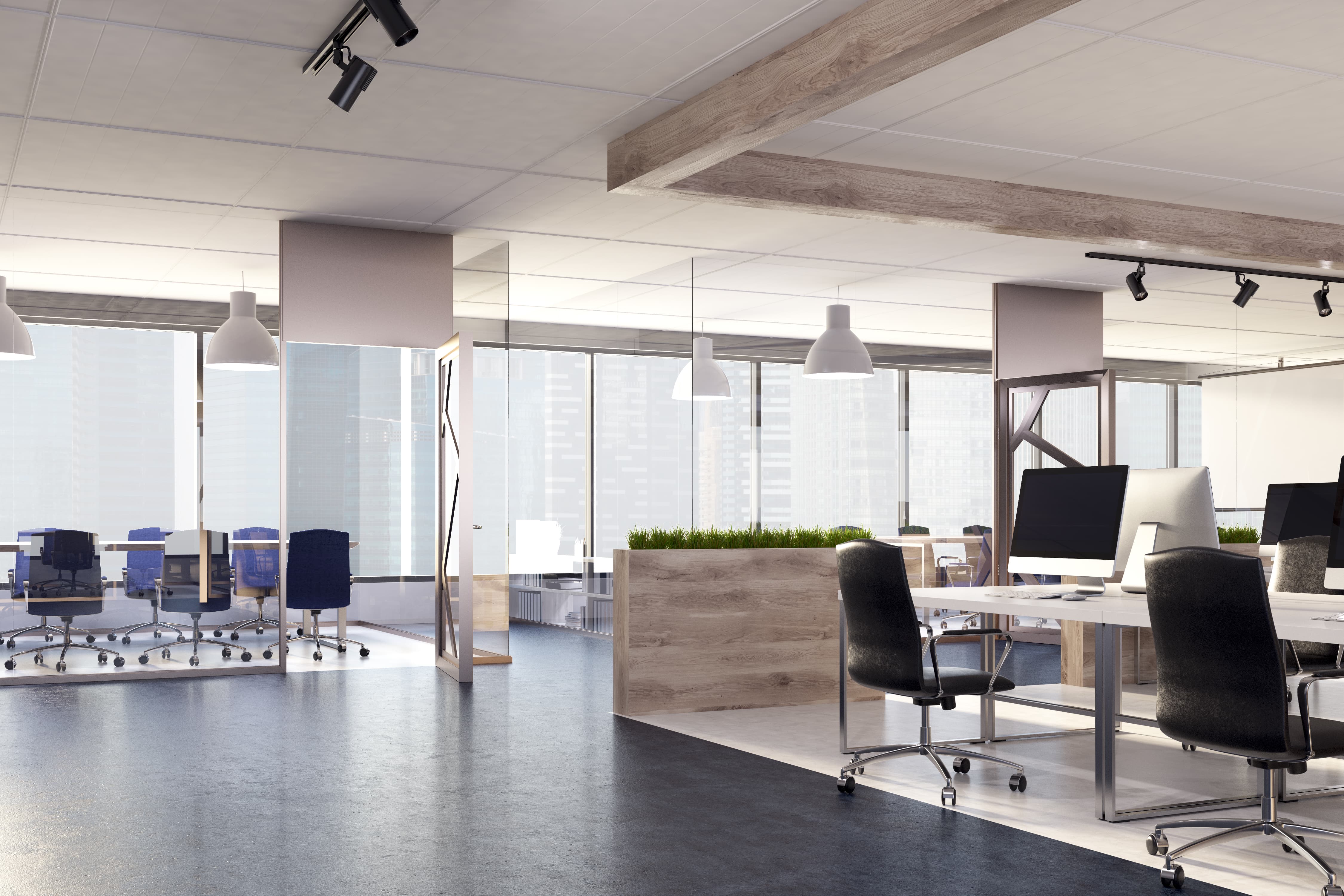A major element of any lease negotiation is the tenant improvement allowance given by the landlord to build-out or renovate a workspace to fit the tenant’s needs. The amount of TI allowance has a significant impact on the negotiated rental rate; which is why you need to carefully choose the company in charge of redesigning your office space ahead of those negotiations, to ensure a decent, tailored to your needs allowance is negotiated. Working with a design company that understands the final cost during the design phase and maintains control of the construction process is essential for you, as a tenant, to realize the advantages of potential cost savings and maximize the utility of your TI allowance budget. To help you better understand how the improvement allowance works, here’s everything you need to know.
What’s in TI allowance?
The scope of work may include architectural, project management, and permitting fees. It should also cover necessary refurbishments such as renewing flooring and base, repainting the walls and changing the doors, replacing or upgrading HVAC systems, demolishing or adding walls, replacing the ceiling grid or lighting, adding built-in workstations or reception desks and more. The contract will define how the allowance is disbursed: It may be paid directly by landlords or refunded to the tenant after she/he pays and presents the receipts to the landlord. The contract may also specify what the TI allowance will cover and the quality of materials and furniture that’ll be used. And this brings us to the next two points:
ALWAYS negotiate!
TI allowance is a notable benefit, and tenants must enter negotiations prepared to haggle hard for it. They need to come to the negotiations table with an accurate estimate of the intended renovation. Otherwise, they could accept a negligible TI allowance only to find the amount enough to cover only electricity, plumbing, and air conditioning. Any other expenses needed to improve the space would then come out of the tenant’s wallet. Consulting our Truspace designers beforehand to get an accurate cost figure can prevent this kind of unpleasant surprise.
Take what’s YOURS!
Tenants may sometimes consider TI allowance a concession or a gift from the landlord, and therefore not be willing to make demands. That’s not true! TI allowances can be written off by the landlord for capital improvement or lease acquisition expenses and are therefore considered a usual cost in the real estate business. With the attitude that TI allowances are rightfully theirs, tenants can negotiate fiercely to secure the best terms for this valuable incentive.
P.S: Rather than seeing extra tenant allowance dollars fly back into the landlord’s pocket, tenants need to secure, through negotiations, the right to keep them for future improvements.
Landlord Control vs Tenant Control
When the landlord takes complete control of the construction process and delivers the completed modified space to the tenant, this is called a “turnkey build-out.” The inherent issue with this approach is that the landlord is going to incorporate a significant amount of contingency expense into the design and construction cost estimate to prevent actual costs from exceeding their forecast. Therefore, except for simple renovations like paint or carpet jobs, it is generally in a tenant’s best interest to refuse the turnkey build-out option in favor of traditional TI allowances, that allow tenants to seek out a proper design company that’ll best serve their interests.
Be smart with your TI allowance
To get the most out of your TI allowance, you’ll want to be on the lookout for fees that landlords usually charge overhead. These fees will be paid from your TI allowance, and the more your TIA budget is drained by fees, the less you’ll have to spend on the actual renovation work.
Another thing tenant’s need to do is make arrangements for any cost overage beyond the allowance cap. Some landlords will amortize this sum over the terms of the lease, so the tenant doesn’t have to pay for the balance in cash. Many tenants prefer this option.
It is also essential, if you still can, to work with a “professionally minded” landlord who understands the process and avoids those who may be less sophisticated.
To prevent any unpleasant surprise. Truspace will inform you what these unexpected fees are going to be before attending lease negotiations; and if they’re respecting the leasing practice in your area.
Substantial Completion of improvements
Timing for a buildout can be tricky. It’s essential to make sure that the completion date and the usability of your workspace coincide with the start of your rental payments. Many factors may influence the timeline, including permitting, design, construction, etc. It is therefore always important to carefully set the beginning of rental payments as it relates to the completion of the buildout.
As said before, when a project isn’t thoroughly supervised, there is a higher chance for it to go over budget and past its due date. That’s why our team remains continually involved during the construction or renovation phase, substantial completion is therefore anticipated and adapted to your deadline.
Truspace has been providing corporate construction services and has worked on tenant improvement construction projects for many years. Our Design and Construction teams work side by side under one roof, which positively impacts the schedules, budgets and overall success of our projects.




